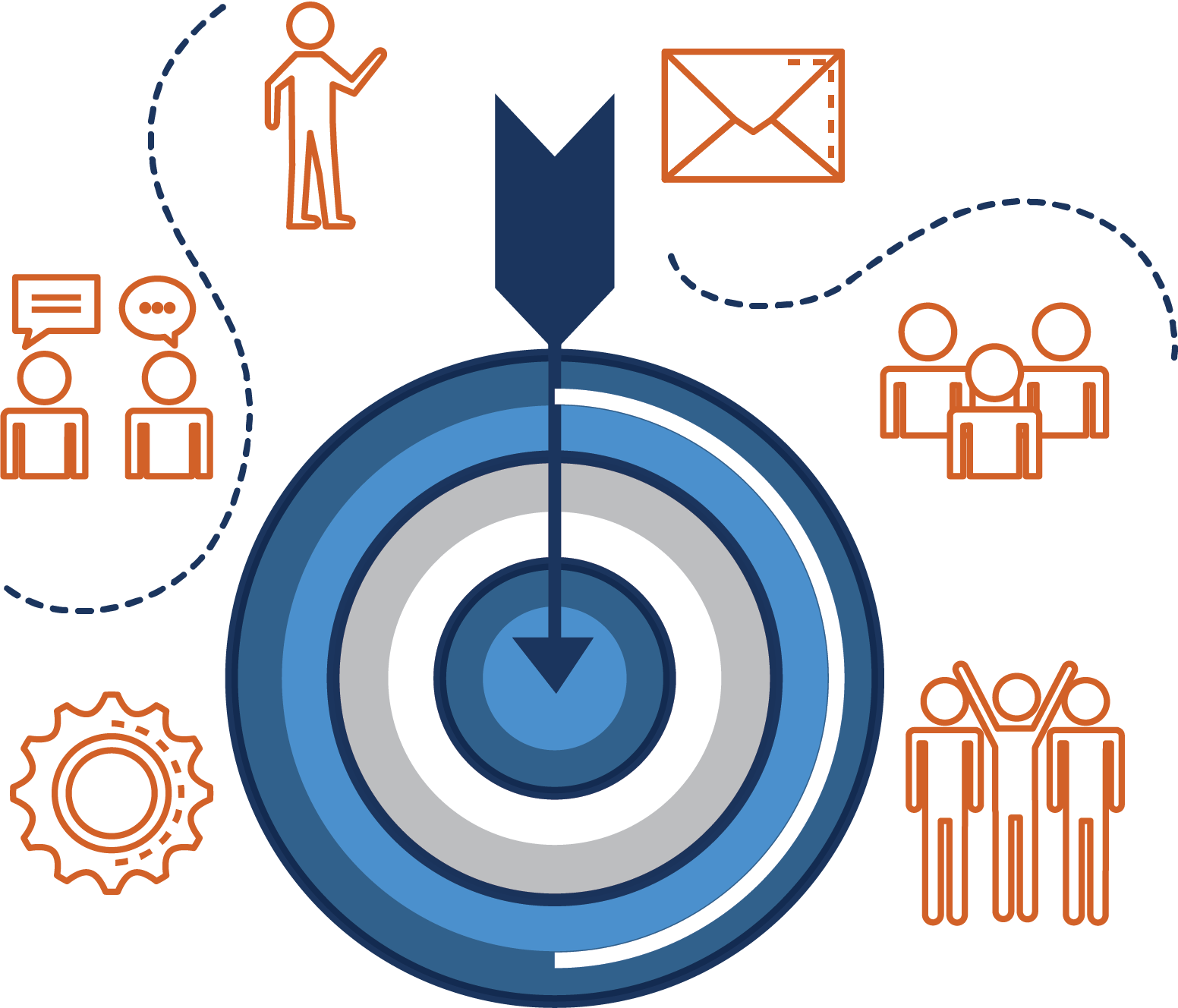The Federal Employee Viewpoint Survey (FEVS) launches this week, and Wheelhouse Consultant Loretta Cooper, our resident expert on all things FEVs, knows just how important it is for your team to complete the survey. Feedback from the survey can help you measure progress and plan for future success of your team. But, it’s not always easy to get your people to complete FEVs. That’s why employee engagement is so important.
She recently wrote an article for GovLoop, “10 Tips for Increasing Participation in the Federal Employee Viewpoint Survey (FEVs).” Check it out to see how you can create a virtuous cycle of employee engagement that will pay big dividends for your team and increase your team participation in FEVs.

Creating a Virtuous Cycle of Employee Engagement
Collecting meaningful employee feedback is a cul-de-sac. You need employee engagement in order to collect feedback – in order to drive employee engagement.
With just a few weeks to go before the (re)scheduled release of the 2020 Federal Employee Viewpoint Survey (FEVS), now is the perfect time to jump into that cycle and remind managers and employees of all the reasons participation benefits them.
The annual survey offers leaders a great opportunity to hear the voices of your most important asset – your workforce. If employee engagement isn’t in your metrics for success, it should be. FEVS is a great way to measure that objectively year-over-year.
Here are 10 ways to ensure your organization gets top participation scores:
- Communicate more than you think is necessary. Leverage all your platforms; newsletters, direct emails, team chat sites, all-hands meetings, team meetings, and manager meetings. Start now to remind your team that participation is important.
- WIIFM? Your employees will want to know “What’s In It For Me?” Engagement surveys give employees a platform for providing meaningful, data-driven feedback at all levels of the organization. You’re handing them a megaphone to create change. Encourage them to take full advantage of the opportunity to use it.
- Make it fun. In our work, we help teams create FEVS-related mascots that are unique to each division. These range from friendly alligators to talking acorns – silly bits of branding that are meaningful to particular divisions and help to build a sense of shared fun. Adding a bit of whimsy to your communications reminds employees of the larger campaign, linking all the preceding messaging in their memories.
- Acknowledge that 2020 has been an unusual year, and honest feedback is welcome. This year the survey will reflect some of those changes. The Office of Personnel Management (OPM) has announced it has slimmed down the core of the survey and added additional questions related to the COVD-19 work experience.
- Work with your leaders and management teams. Ask each group to set a participation target and cascade it throughout the organization. Although OPM warns against rewarding employees for participation, a little friendly competition between teams can sometimes be a good thing.
- While the survey is in the field, keep communicating. The planned six-week fielding period for the survey means that employees will still be returning responses well into October. Take advantage of those weeks to encourage participation.
- After the survey closes, be sure to acknowledge participation by thanking your employees for their feedback. Assure them you will share the results of the survey once OPM makes the details available.
- Share the results; good, bad, or indifferent. Employees will want to know the results of the survey. Our best practice is to share in the context of a series of optional employee listening sessions. Share a high-level overview of the data and ask employees to provide their analysis of what that data means to them. This activity builds trust, becomes the basis for ongoing conversation, and is the key to improving engagement.
- Identify Employee Driven Initiatives. The outcome of employee listening sessions should be employee-driven improvement initiatives. Our best practice is to support two to three volunteer teams, each with their own specific, data-driven initiative. The scope of these initiatives should be manageable enough for employee volunteers to address, but meaningful enough to inspire motivation and change.
- Repeat. In our experience, it takes about a full cycle for these employee initiatives to start making progress – just in time for OPM to release its next annual survey. As you begin the new cycle to drive participation with your communication campaign, be sure to toot your own horn. Remind employees of the progress they are making toward their selected initiatives by using specific examples; “because you told us our leadership team did not communicate enough, we instituted quarterly all-hands meetings,” etc.
Virtuous Cycles Vivid Rewards
The time invested in creating this virtuous cycle pays big dividends; improved employee engagement means better morale, increased teamwork, collaboration, and productivity. It might even result in less stress, improved interpersonal communications, relationships on the job, and maybe even a happier workforce.
Previously published by GovLoop on August 18, 2020.
If you interested in getting a jumpstart on what to do with FEVS results, take a look at our guide on creating a 90-day Guide to Getting Your Team More Productive and Happier at Work.

Devin Boyle
Sr. Consultant, Wheelhouse Group
Devin supports the Partnership on Employment & Accessible Technology (PEAT) as Emerging Technology Lead. An experienced communicator and avid writer, she has authored articles for national, local, and trade publications to advocate for societal change and social inclusion for vulnerable populations.
